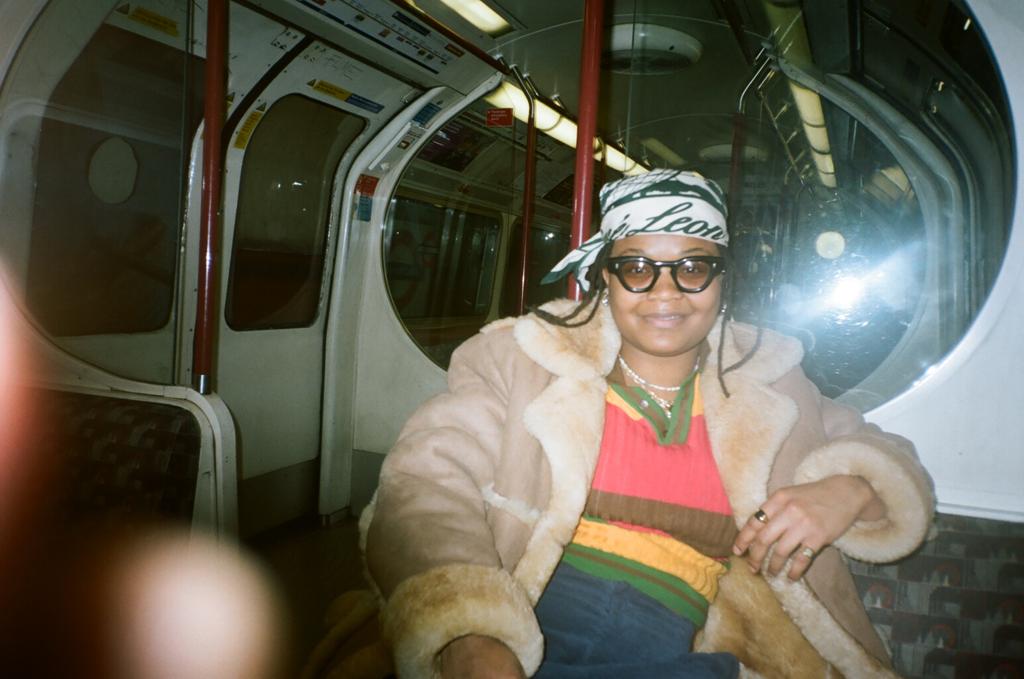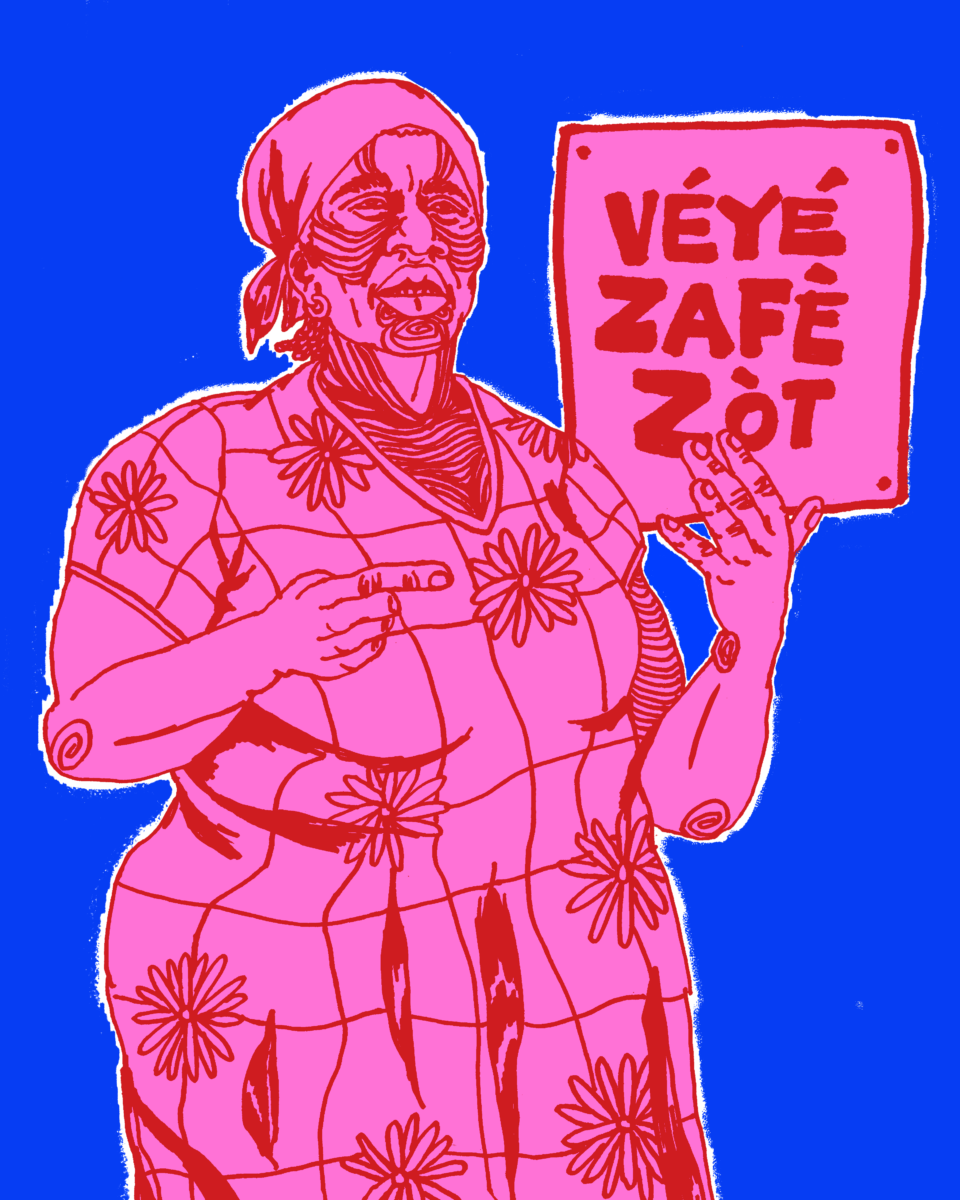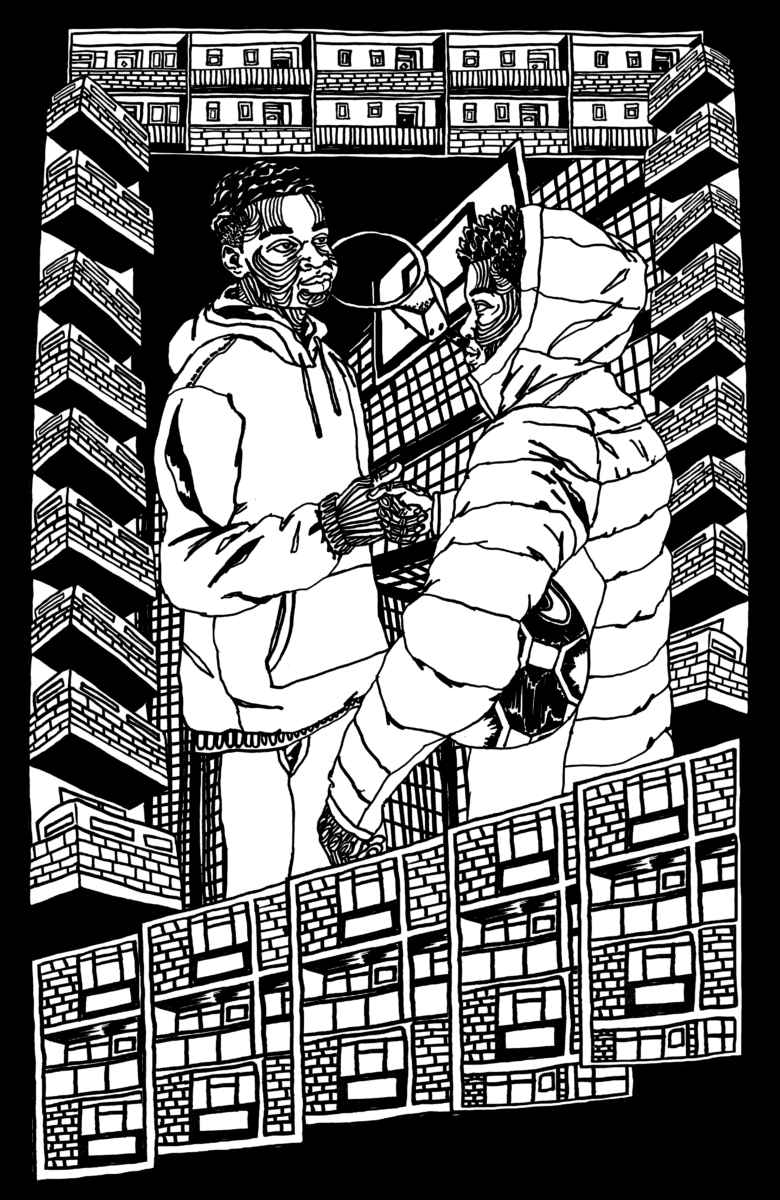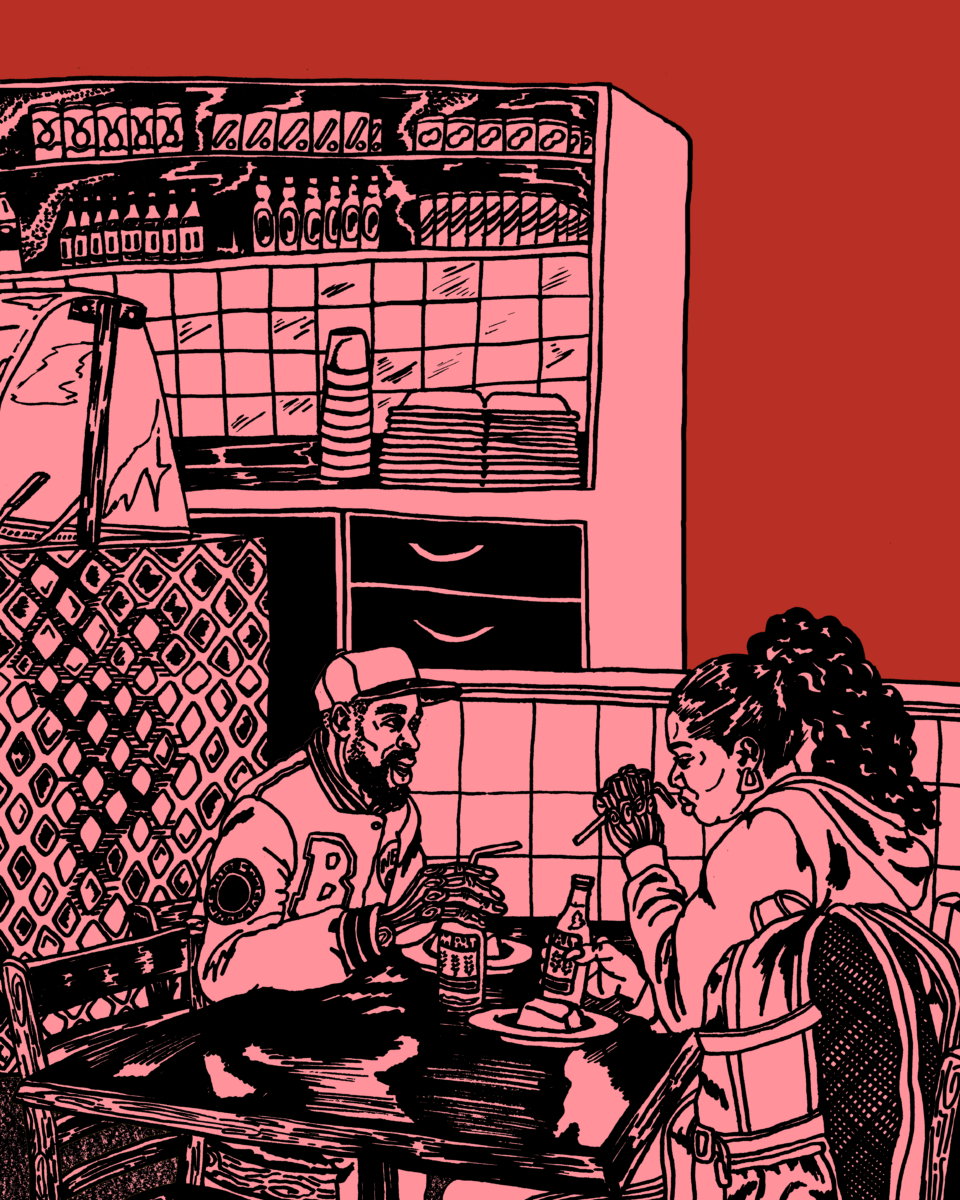A Word from Olivia Twist: Balancing Passions
Interviewed by Natasha Knight, Olivia Twist talks to us about her multifaceted approach to her creative work, the importance of sharing knowledge whilst balancing activist and commercial roles.

Olivia Twist, Illustrator and Educator, AKA the self professed ‘East End Sweetheart‘ from East London, combines both skill and personal passions in order to chart her own unique but exciting career path and work.
Olivia’s work focuses on the everyday stories around us, to give deeper focus and meaning, thus demonstrating that what is under your nose can actually be a more visually captivating narrative, than first thought.
Thank you for talking to us Olivia. Tell us a bit about yourself, and why your creative work/illustration is important to you?
I’m an East End babe. I love the mundane. I love listening to stories my grandparents tell me. I love to collect things. I’m someone who’s always watching. I’m fascinated by people’s faces. I have too many Sharpies at home. Illustration is important to me because for me I use it as a tool to demonstrate worth. For me my work acts as an “I see you”. I actually care more about the conversations that come from my drawings then the actual drawing.
Illustration is important to me because for me I use it as a tool to demonstrate worth. For me, my work acts as an “I see you”.
Olivia Twist

If I’m gonna work with a large commercial client or a brand I first ask myself ‘Does it feel authentic’?
Olivia Twist
You’ve collaborated with commercial clients like with Nike as well as more activist/community-based projects such as People Dem Collective and the Hackney Residents Globe Project, which are wonderful, in different ways! Walk us through the differences – or similarities – in how you approach such projects, commercial vs community?
If I’m gonna work with a large commercial client or a brand I first ask myself ‘Does it feel authentic?’ With Nike, I love love love love trainers. I’ve been collecting trainers for a minute to be honest. Anyone that knows me knows how much I love my trainers, so when (they) approached me to work with them I jumped on it. I said yeah man. In the past like, beer companies have asked me to do some illustration for them but I don’t drink beer so I just felt like you know what, this feels a bit funny in here – don’t really want to do it.
When working with community groups a lot of the time it’s allocated to getting to know people becoming a familiar face part of the furniture really understanding to people and the motivations for the project. And for me that’s kind of my favourite part of the process.
The main difference when working with the commercial clients and smaller community groups and things like that definitely has to be the time you get to turn around of the work. Large companies have tighter deadlines in my experience but are really clear when they are giving you feedback so it makes the creation process smooth.
When doing community projects as well, for me it’s important to have things in common and a connection to the group you’re working with. There’s been a lot of work I’ve done with young people in East London and I really enjoy it and they also I really happy to know that oh like she’s from down too. She went to school I went to. That kind of connection makes the workflow easy. Having this kind of connection makes the young people feel even more comfortable with you – the jokes be flowing and I see more openness when they’re trying new techniques or doing something a bit out of their comfort zone.

What tips can you offer to other creatives who want to utilise their work to support local communities/activism?
I would say make sure that you are connected to the community that you want to work with so, you know, show up – good events have genuine interest, build relationships that are authentic and see where you can work with people rather than for people think about how you can help to champion local expertise and employ your lived experience.
I’m into knowledge exchange. I’m into discussion, I like to gas people up and help build their confidence.
You look like you really enjoy your work, engaging with people and illuminating everyday stories – what’s your favourite project you’ve worked on, and why?
My favourite project has got to be the residency I did with Carneys Community which is a youth club in Battersea. the residency initially was supposed to be a month or two but we got on so well that I was there for more than a year doing bits. I learned so much from the young people and it was a time where I got to apply methodology I had been developing during my masters course. The 10 meter mural that I made for youth club came about by collecting stories and going on walks to do research with young people and you’ve workers at the youth club. I would eat lunch with the kids at the youth club I got to customise bikes and boxing gloves with them. I really got to know the kids and that for me feels really nourishing. I love slow projects. I don’t want to fly in and fly out.
You also work as a lecturer – can you tell us more about how this informs your work as an illustrator (or vice versa)?
Lecturing came about, I guess, from doing workshops with young people, with elderly people, with groups of women where English isn’t their first language. It kind of felt like a natural pivot and progression, and if I think about it, I have always wanted to teach. I’m into knowledge exchange. I’m into discussion, I like to gas people up and help build their confidence. With teaching I really encourage my students to research. And when I talk about research, I encourage them to develop their own methods of researching to make it (an) interesting process. I write them socially engaged briefs and I love a live project. I’m all about community and I want the classroom to be a place of joy. So I’m doing my bit to ensure it is.
What support have you felt was crucial to you, along the way in your career? This might include collectives, creative initiatives, peers etc
When I think about this, I would say that I’ve been fortunate to receive a lot of support in different areas from people from like, different decades of My Life. Going to do my masters felt crucial to me and it was the place where I really got to hone my practice and really think about, okay what can a socially engaged practice look like for me? My BA tutor (at London College of Communication) pushed me to go do my Masters (at Royal College of Art) and I’m glad he did. Even in applying he was supportive, so I have to say that first of all.
SXWKS collective which formed like 10 years ago has been a real testing bed for ideas and collaboration. Working together with people who do poetry and film and stuff I don’t do has been enriching. When we meet up, we would have crits and share WIP. Which is important to do to make sure the work is ambitious, and ideas are landing.
Doing my first panel talk in 2015 at autograph as part of the missing chapter collective. Working with fellow artists and designers to explore black presence in the UK through archival imagery.
I would also say my time working at London College of Fashion and doing engagement work which looked like workshops with communities across Newham and Tower Hamlets (London) and even in HMP Downview. My stint working like 9 to 5 helped me think about how I want to be as a practitioner and informed my pedagogy for lecturing.
Meet people and chat to like-minded people, make your fellow illustrator friends. People who get you and get the industry

Do you have any advice for illustrators/creative freelancers who are feeling isolated?
I definitely say, go to events – like zine launches and round table talks. Meet people and chat to like-minded people, make your fellow illustrator friends. People who get you and get the industry, that’s helpful, you know? Try and work somewhere where other people are also working like, you know, cause of (the) pandemic bear people are working from home or in cafes so….body up there if you can, maybe like once a week or something you know. Think about joining or forming a collective to build up that community. Connect with online mates as well, once you see that they are alright – do gallery mates dates.
I will always be ‘East Babe Liv’ first, coz that’s the thing that makes my work me and it’s the lived experiences that inform my practice.
As a self-described ‘East End Sweetheart/Illustrator and Lecturer’, how do you organise your time and are you able to achieve a healthy work/life balance? If so, could you share with us how you do so?
Work-life balance is massively, massively important to me and I have become a lot better in recent years at balancing all of the things I do – initially in the like early days, just after graduation I would say yes to a lot of different things. It was great like opportunities were coming in and stuff when I was really grateful. I did want to stretch myself, try new things and move out of my comfort zone and all of that. But then I realized; oh man, I’m doing work on a bank holiday, and I don’t want to be doing that. Everyone around me was off enjoying the sun or whatever and I’m in front of my laptop. So, I was like you know what I’m promising myself to prioritise rest because obviously if I’m not rested myself how am I going to be teaching properly? How am I gonna be doing all this drawing? There’s a time for everything and it’s easy to get caught up in the rush but I’m not tryna be living on the edge of burn out. I will always be ‘East Babe Liv’ first, coz that’s the thing that makes my work me and it’s the lived experiences that inform my practice.
What can we expect to see from you in the future?
I’m working on a project which I’m really excited about – doing it for the whole month actually and I’m proud of (the) work I’ve made, so that would be coming out soon – to see it online and all of that. I’m also gonna be working on a mural with some young people, which I’m really excited about. I haven’t done something like this since before covid. I’m also going to be doing some editorial bits, which is fine because I like the research that goes into that as well. And then the usual workshops with young people – my favourite thing.
What tips would you give to other creatives in need of motivation/inspiration in these challenging times?
So, tips I will give to other creatives would definitely be, to keep your eyes open, you know, be present and just observe and absorb the everyday…. there’s always something to celebrate, to be honest and it low-key is not very strenuous to do so. Secondly, I will say, talk to people, talk to your friends, talk to fellow creatives, talk to family you know, bounce ideas. And go out and see stuff, go to galleries – these are the things that stir fresh ideas and charge you up. But at the same time, they also act as an escape so its win-win.
With genuine thanks to Olivia for sharing her insights and experiences with us. To find out more about Olivia and her work visit:
Back to News Page
